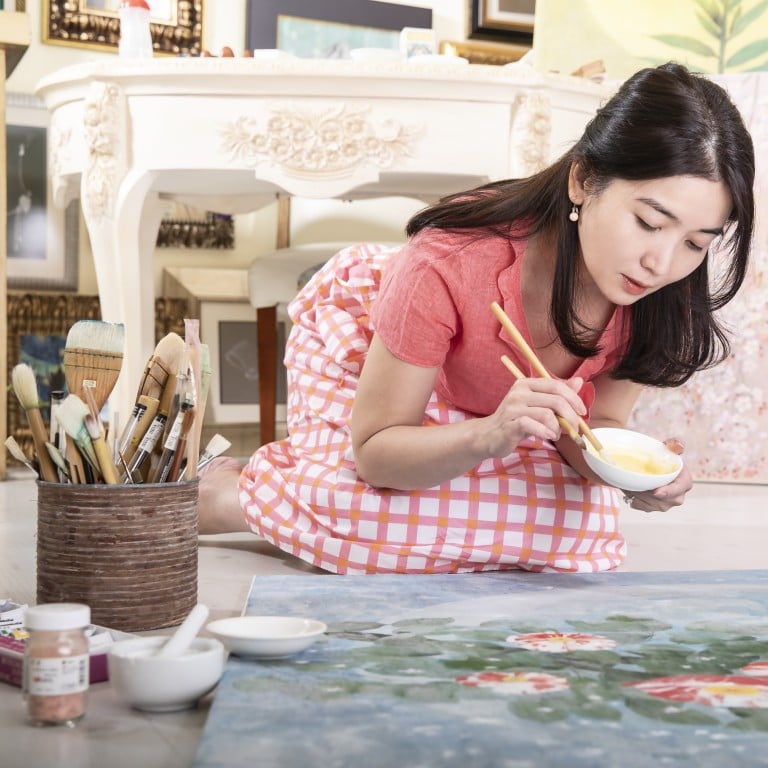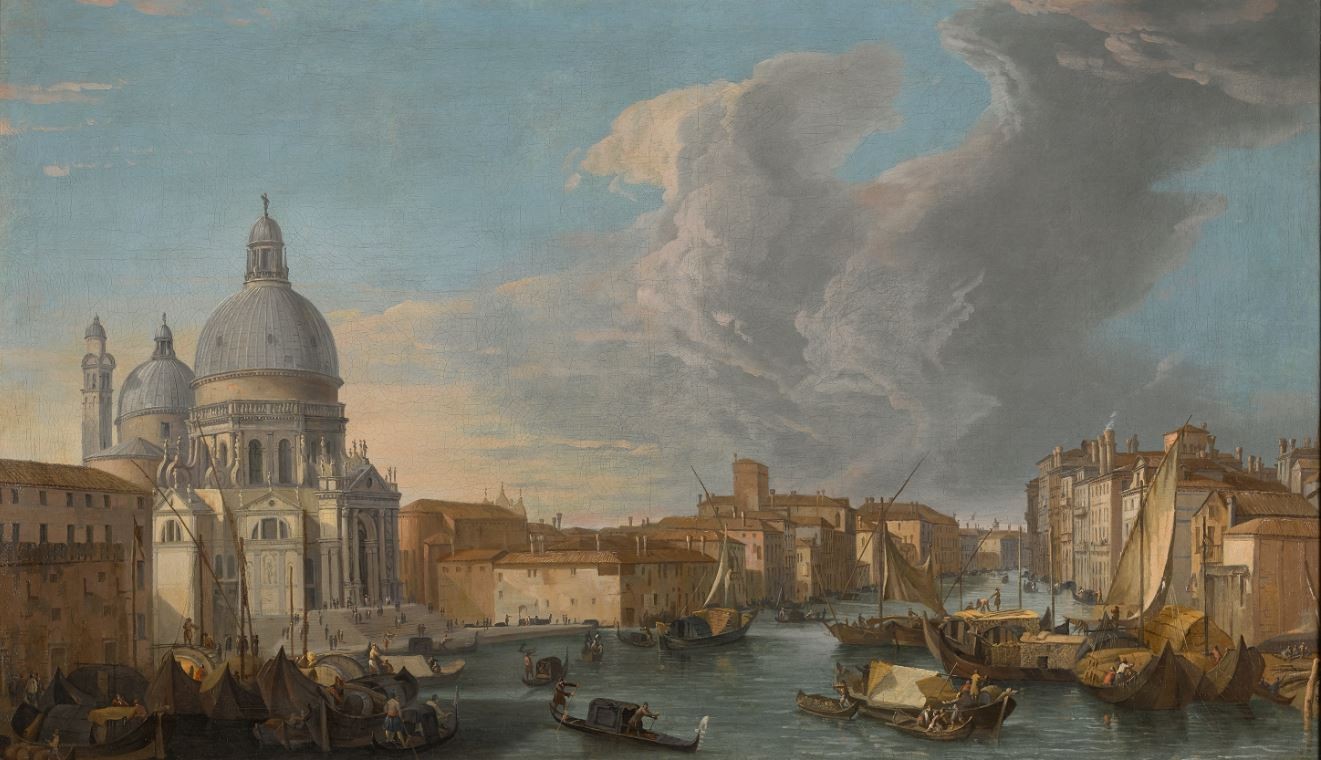Exploring the art of nihonga – the traditional Japanese painting style being kept alive at Hong Kong’s Fringe Club

After studying traditional Japanese art in Kyoto, Hong Kong jewellery designer Karen Lee presents her first solo exhibition of nihonga painting, ‘Moonlit, Blossoms’, at Hong Kong’s Fringe Club in Central
Think of traditional Japanese art, and you imagine a world of discipline and continuous refinement. In this pure quest for beauty, nature takes centre stage in many typical works.
Art in Japan can be traced back more than two millennia, and covers a wide range of mediums, from statuettes and pottery vessels made by the earliest Japanese people, to modern-day origami, literature, calligraphy, woodblock prints, manga and painting, among others.
Nihonga is a very distinct form of painting originating in Japan from around the year 1900, named to distinguish it from the growing influence of Western painting styles, dubbed yōga. “[Nihonga] is a very traditional way of painting,” says Hong Kong-born jewellery designer and nihonga artist Karen Lee. “By using natural stones, minerals as pigments, we paint on Japanese paper, silk, wood and more.”

The roots of this art form were introduced from China to Japan in the 7th century, Lee says, and the Japanese have kept and continued this painting method ever since.
“The interesting thing about nihonga is that it can take you forever to learn and master all the skills and techniques,” she says. “The pigment itself is mineral, that means it will not melt. We use glue and very little water to mix with the powder – which comes in different sizes of fineness – to paint. To create the dimensions of a painting, we need to apply many layers with different colours. To choose the colours, the fineness of the powder, consistency, techniques on applying gold leafs and silver leafs, they all take a very long time to experience and understand.”
When she first started, it was hard to understand the consistency of all the materials that play a part in creating an art based on this medium, “because it is not something we can put in calculations or numbers”. The paper itself also affects the consistency.
Lee first learned about nihonga during a museum visit in Japan. “I was amazed and attracted by a painting which I could not figure out what kind of pigment and painting [was used]. It looked powdery, very soft and with very nice details,” she remembers.

Lee tried to get more information about the painting but found that since it was done in a traditional art form – not as common as water colour or oil painting – even very few Japanese knew about the style. It wasn’t until an instructor from the jewellery school Lee attended helped her research and found the information, as well as a teacher in this fading art form.
The artist says that patience is key: when you do nihonga, you cannot rush. If you rush, the powder cannot sit, or stick, well to the paper. And as a foreigner studying art in Japan – Lee took on an apprenticeship in Kyoto – it took all her resolve and concentration. “Art is something that is not easily explained in words, and my teacher could not speak English while my Japanese is not so good,” she says. “Thus, a lot of time I need to observe every single detail.”








